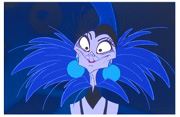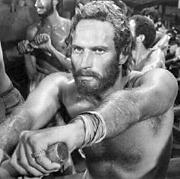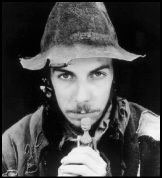AN IRONIC MEASURE of just how out of touch the Disney machine has become, a movie that CEO Michael Eisner reportedly loathed, that was scrapped and revamped several times and that was thought to be a December dump following the highly anticipated (and dreadful) 102 Dalmatians, is the company’s unlikeliest and freshest animated film in a decade.
THE EMPEROR’S NEW GROOVE
directed by Mark Dindal with David Spade, John Goodman, Patrick Warburton, and Eartha Kitt opens December 15 at Majestic Bay, Metro, Pacific Place, and other theaters
Veering from corporate formula, Groove gleefully substitutes slapstick and smarm—the latter via David Spade’s deadpan delivery—for the sickening sap and insipid music prevalent in recent years. (Recall The Hunchback of Notre Dame and Mulan.) The fable follows the travails of Spade’s Kuzco, an arrogant emperor of some ancient Mesoamerican jungle civilization, as he’s turned into a llama by his devious advisor, Yzma (Eartha Kitt), and her much younger stud-muffin, Kronk (Patrick Warburton). Kitt, naturally, oozes a strange kind of arid sexuality while Yzma’s relationship with the young hunk is mined for some pretty edgy material by screenwriter David Reynolds (who seems determined to single-handedly bring Disney into the 21st century). For his part, Warburton neatly steals scenes with dimness approximating that of his Seinfeld character, Puddy.
As annoying as Spade is on TV’s Just Shoot Me, he’s not bad as a llama. His wisecracking is crisp and consistent, and just when Kuzco’s becoming really unlikable, the oppressed peasant Pacha (John Goodman) shows up to help return him to his natural state as well as his throne. From here on, Groove takes on a modified buddy-film trajectory, but with an interesting twist. Goodman reverses the sidekick slot often filled by a talking animal; as the straight man, he’s Groove‘s moral center and its de facto hero. In a sardonic acknowledgement, director Mark Dindal has Kuzco stop a scene, draw an “X” through Pacha, and prod the audience, saying “Remember, it’s all about me.” Other sly audience-participatory, self-referential moments ࠬa Warner Brothers ‘toons abound.
The result is a shocker; it’s akin to Bugs and Daffy’s kicking the crap out of Mickey and Donald in their own house. Groove‘s animation, bold and angular and occasionally impressionistic, seems a departure from standard Disney fare. The absence of a cloying soundtrack is especially pleasing—there are only two numbers, which bookend the film. Most of the other Disney devices have been nixed, as well, and those that remain—like the enforcing and extolling of traditional family values and the maudlin moment of understanding—are subverted with surprising deftness and welcome irreverence.








